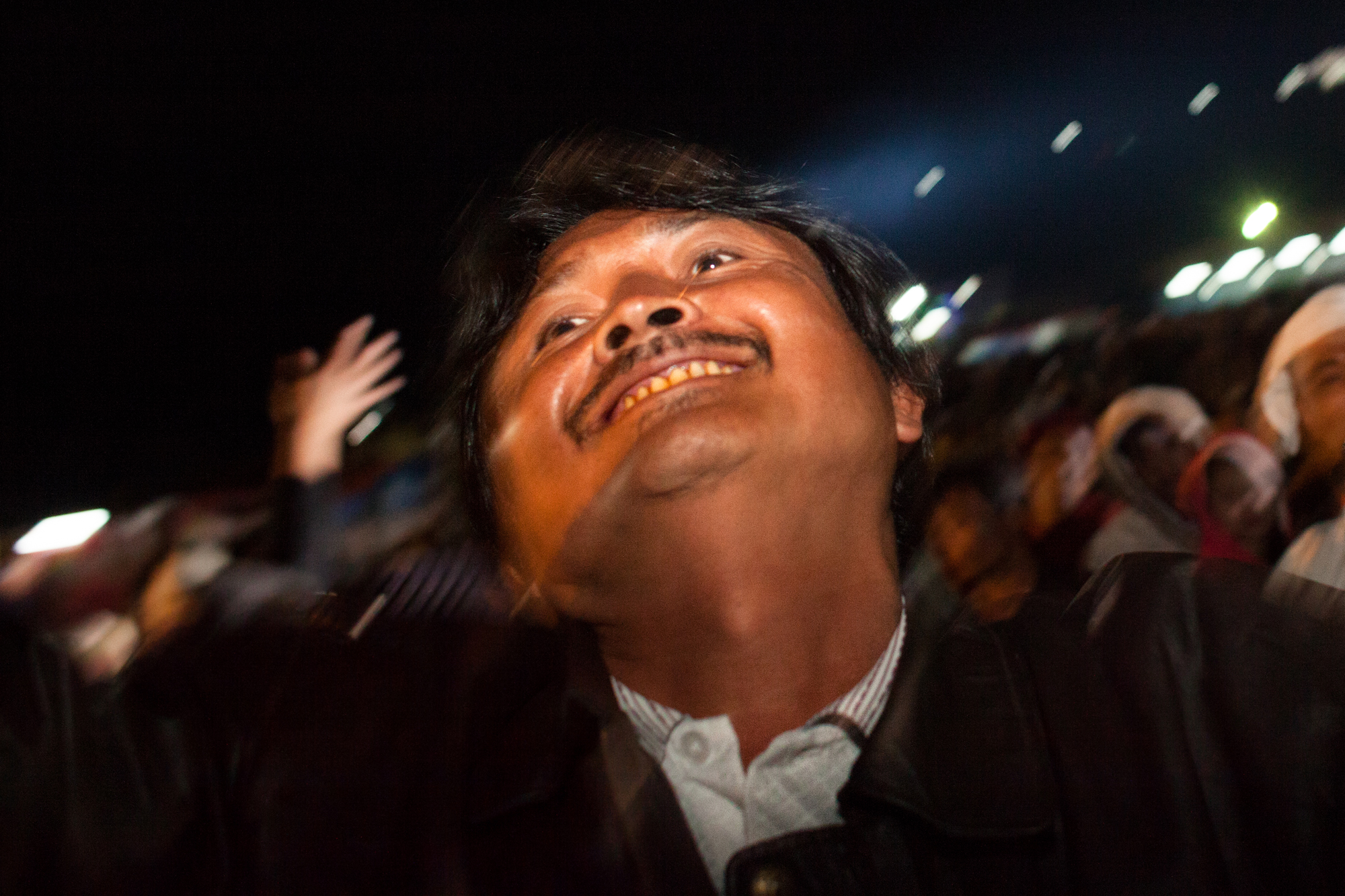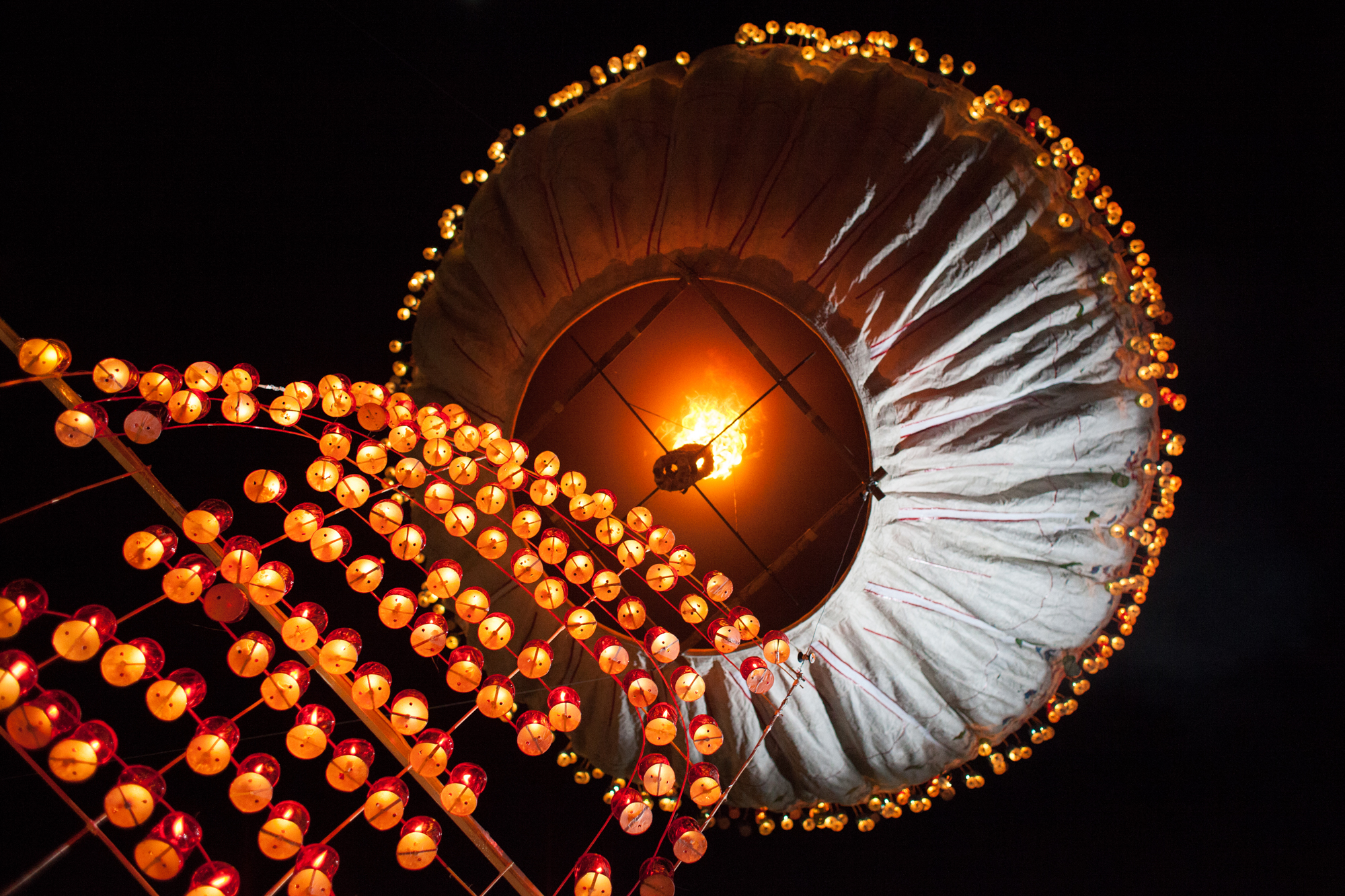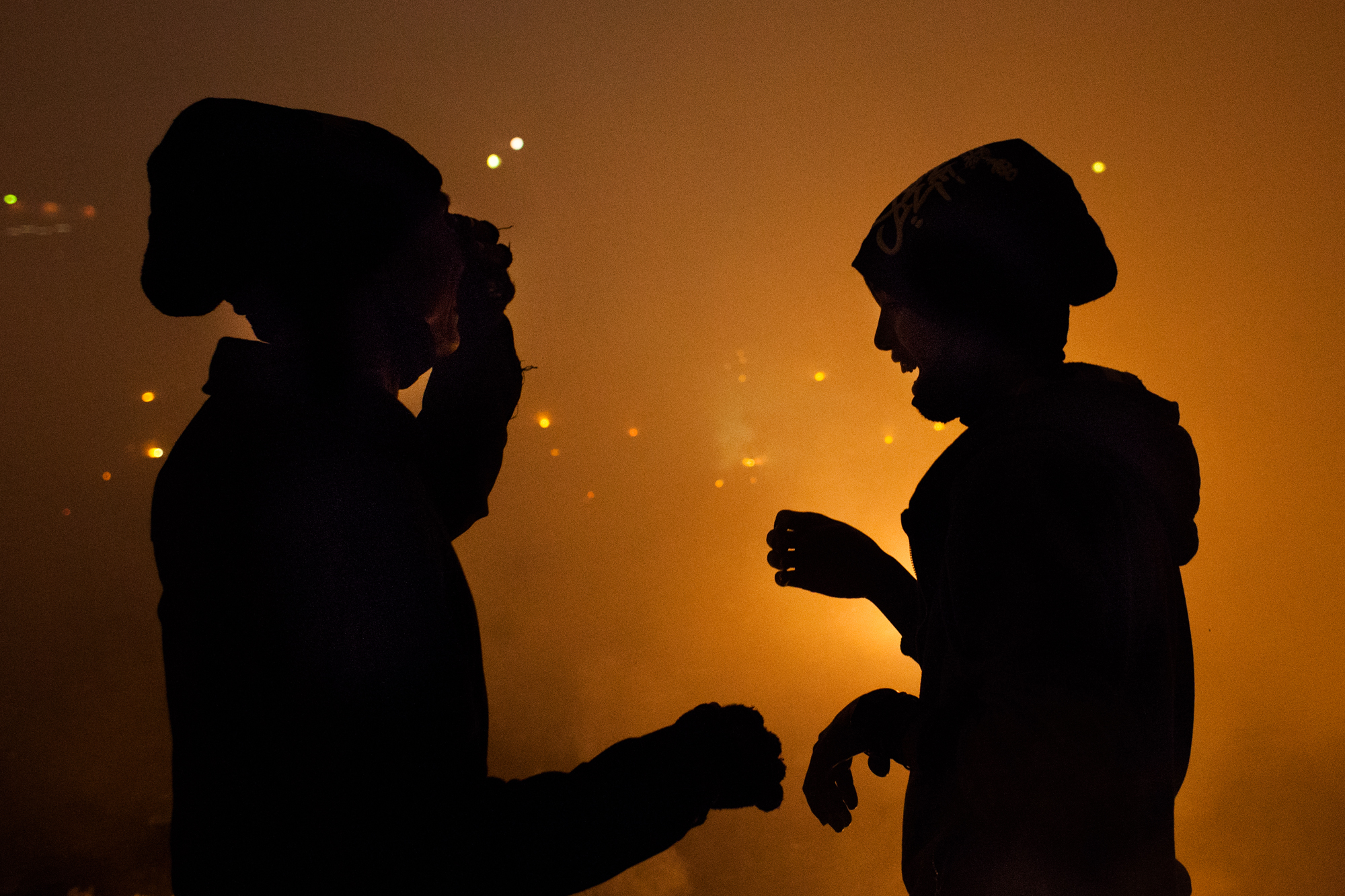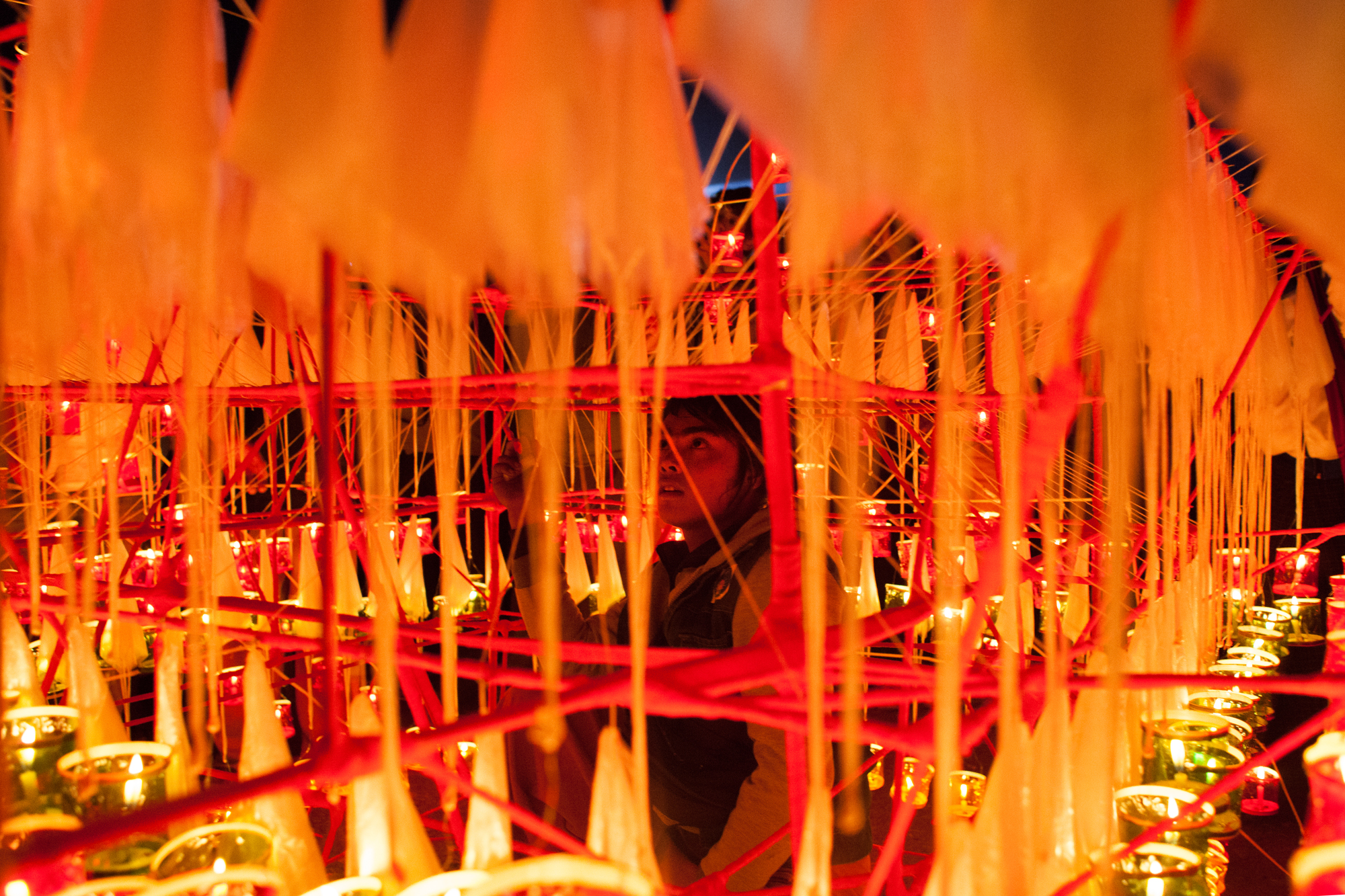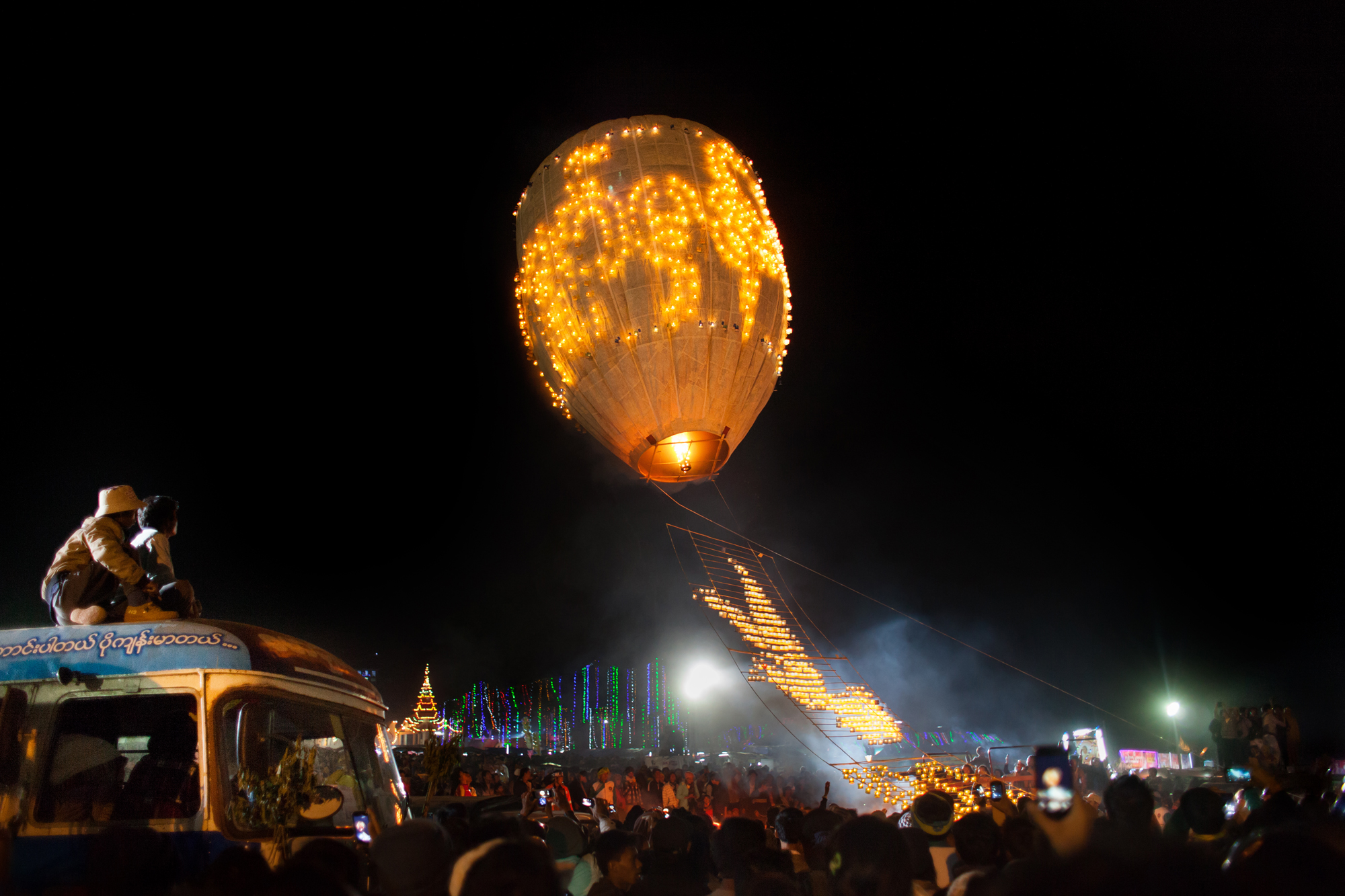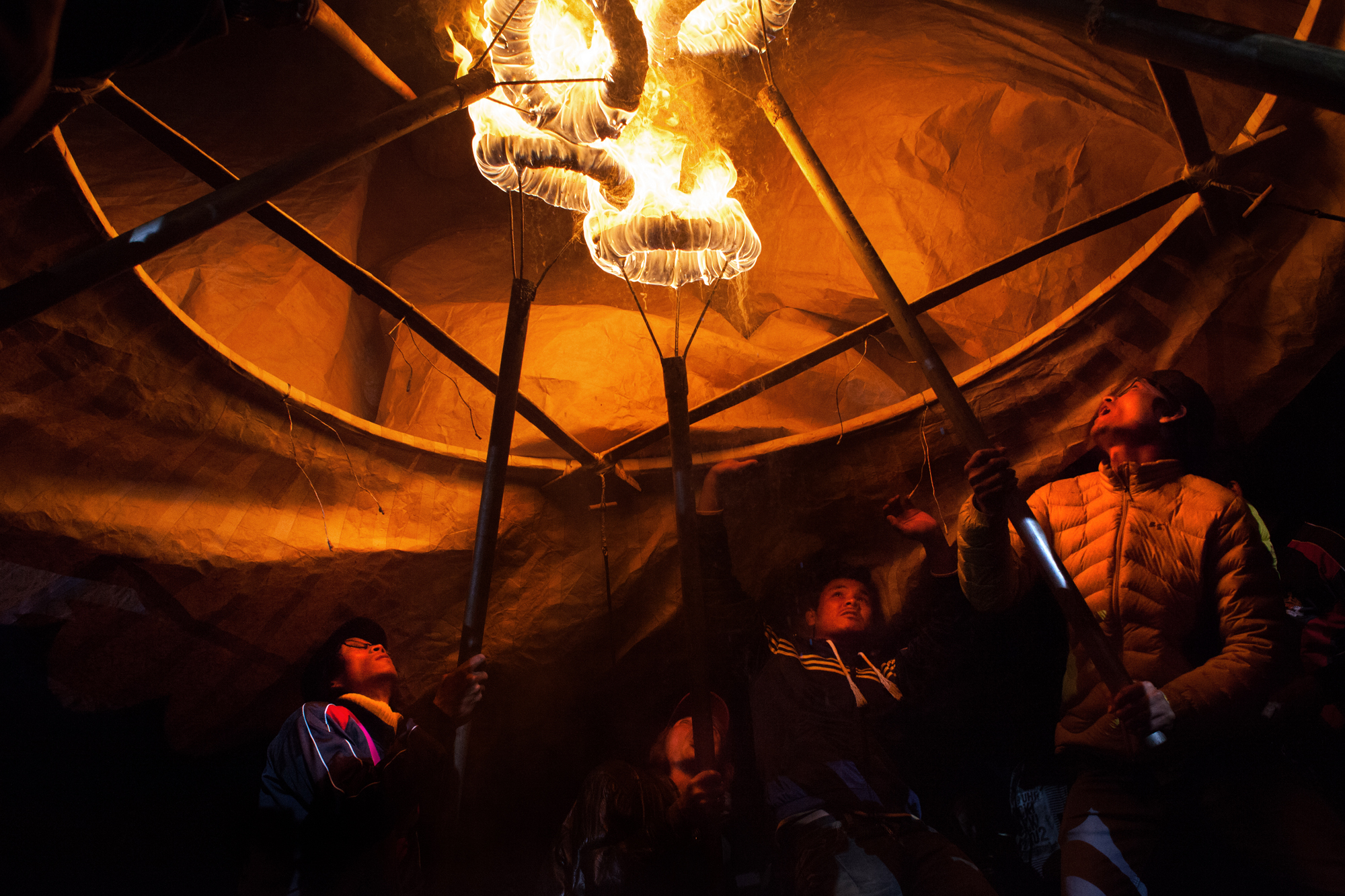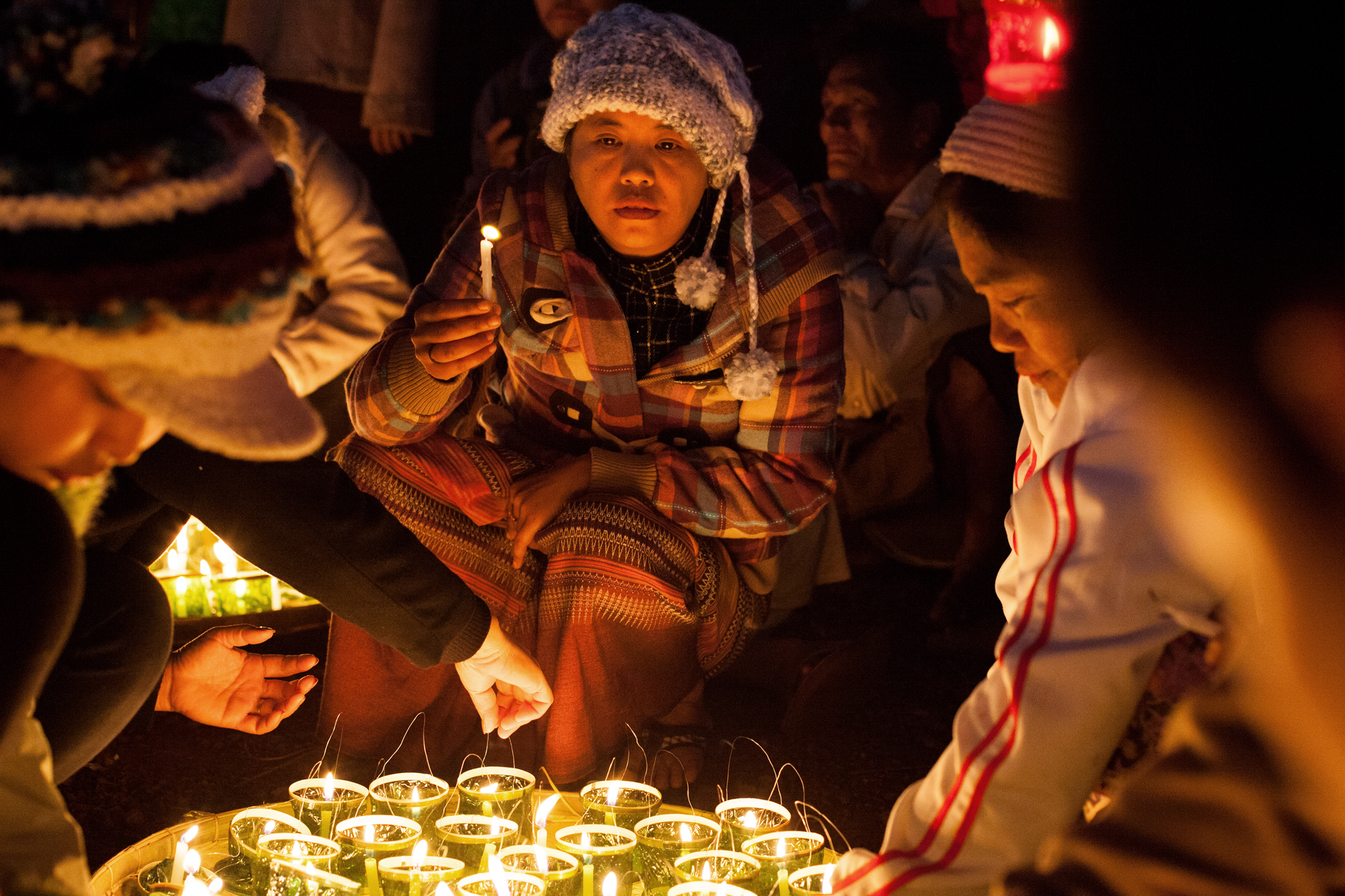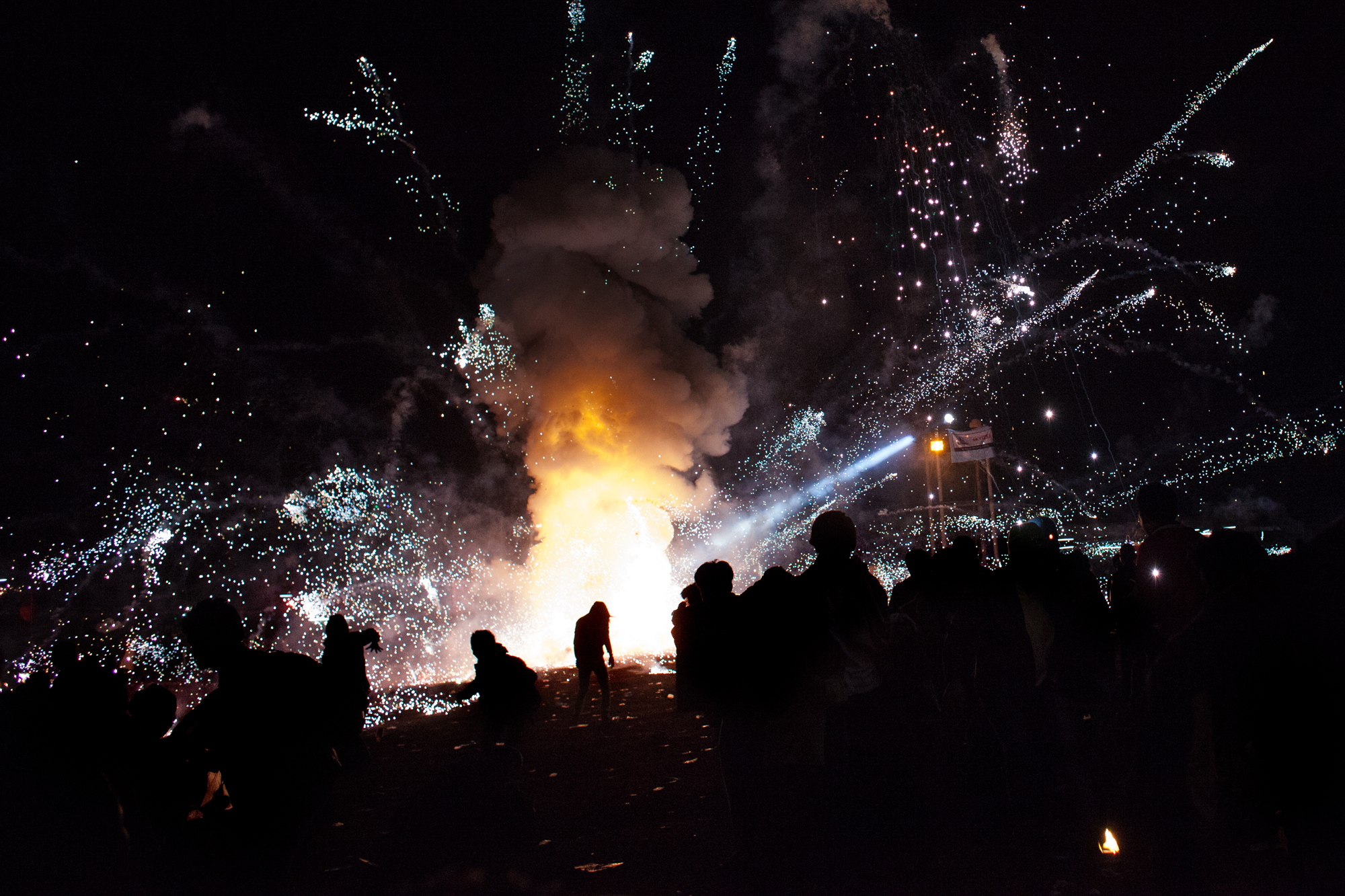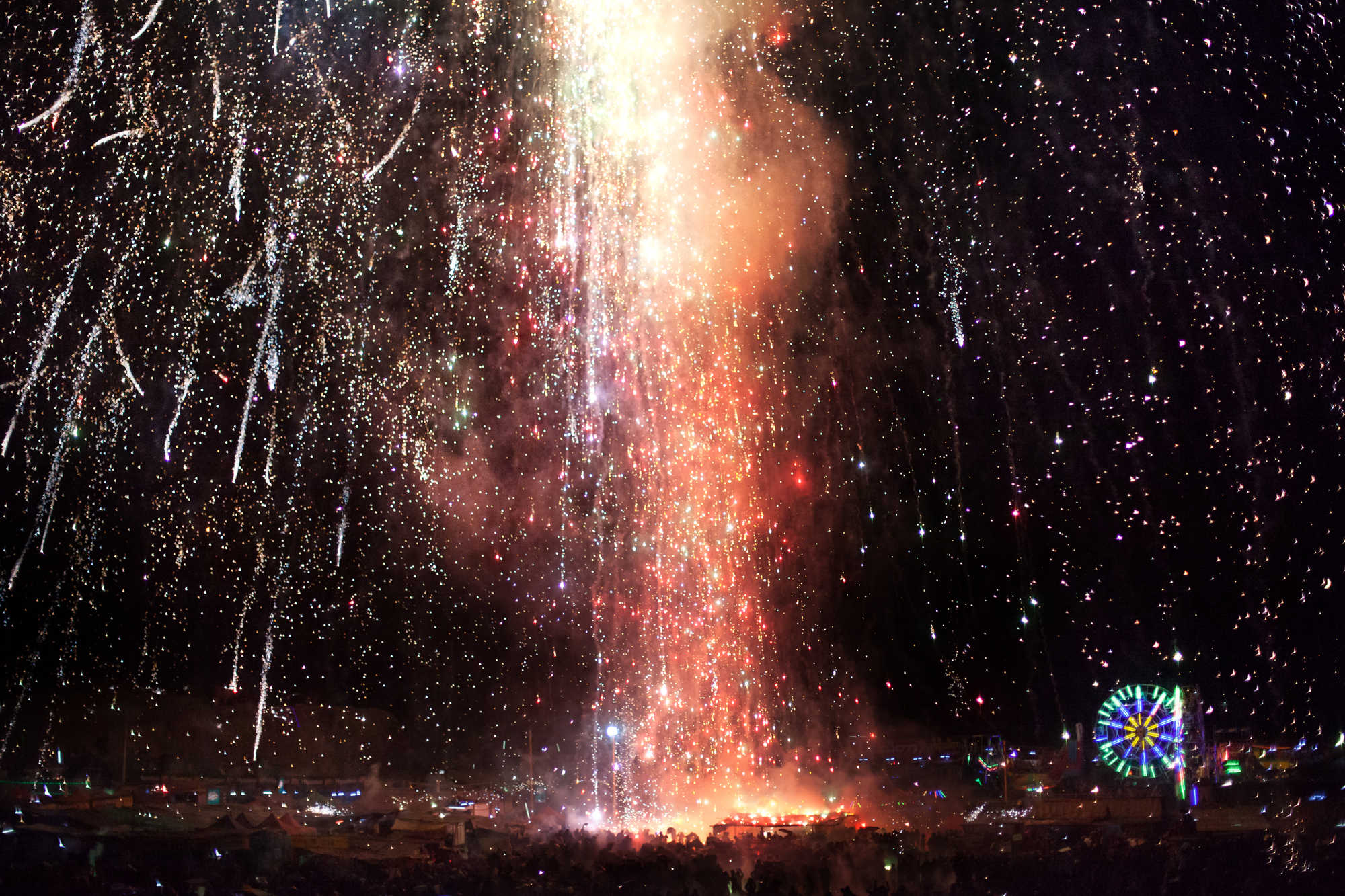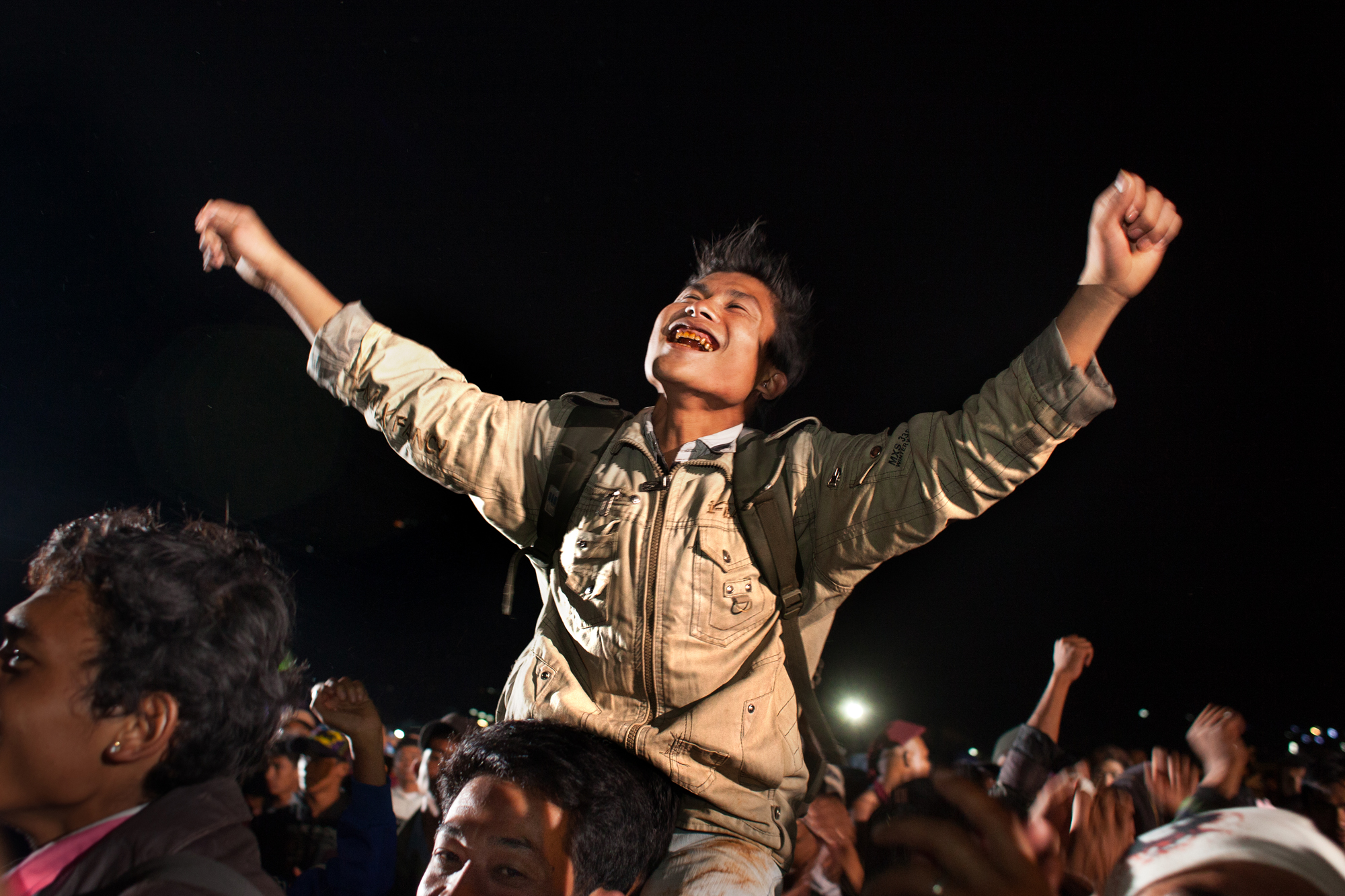The Festival of Thundering Lights
The Festival
of Thundering Lights
“It is like Running with the Bulls. It makes people feel alive.”
Once a year the sleepy town of Taunggyi transforms into a battlefield of firemasters. During the famous balloon festival celebrating the end of Buddhist Lent, the town’s inhabitants go all out to make the most dazzling and dangerous fireworks.
American teacher Kate McNeil described her brush with death at the Taunggyi Balloon Festival as ‘a freaking Harry Potter movie.’ The crew of an enormous paper hot-air balloon laden with 100 kilograms of fireworks lit the wrong fuse, and the rockets designed to fill the night’s sky with light and beauty decided to just go off in the crowded field instead.
Crew members, small kids and barefooted monks scrambled for their lives amid tentacles of spark and flame. Someone was shouting, ‘Don’t run! Don’t run! Get down!’ McNeil hunched over and accepted her fate. “The last thing I thought was, ‘I’m going to die by fireworks in Myanmar, and my mom is going to be furious.’”
Despite a few holes burned in her shirt, McNeil lived to see the rest of the balloons, which, save for one that got caught in some power lines, were spectacular, heralding the end of Kahtein (Buddhist lent) with dazzling pyrotechnics and glowing murals composed of hundreds of tiny candles. McNeil, fascinated, went back next year.
The tradition was a relatively modest affair when began in the 1950s. Now, teams spend six months and thousands of dollars worth of kyat on their creations and compete for tens of thousands in prize money. Champion meesaya, firemasters, are local heroes with corporate sponsorships. Each year their fiery creations grow more elaborate, lucrative and – as McNeil discovered – treacherous.
A week to remember
The Taunggyi travel guide on the Lonely Planet website reads: “Unless you’ve spent too much time in rural Shan State… there’s really little of interest here for the average visitor.” Even Taunggyi native Aye Aye Aung, an anthropology professor at Yangon University researching the annual balloon festival, admits that her city has little to offer tourists beyond one week in November.
But what a week that is. The daytime sky is aswarm with inflated fish, roosters, cows, monkeys and other creatures, judged for their realism and creativity, and at dusk, the firemasters parade through town to the launching field to light up the night until dawn.
Some balloons hurl up over 100 kilograms of handmade explosives into the air.
The 30-foot nya meegyi, balloons, hurl up to over 100 kilograms of handmade explosives into the air, and the sein na pan, candle balloons, rely on the crowd to help light the radiant designs borne on metal racks and the flame-resistant balloon surface. The latter are especially popular with corporate sponsors. Aye Aye Aung recalls a recent entry from Cherry Oo Watch Gallery bearing an enormous glowing clock. It was a stunning work of art, she said, and stunningly expensive.
The balloons she watched as a little girl were still launched from the town center – quietly beautiful offerings to the heavenly Sularmani Pagoda. The town council has moved the launch site three times in the last ten years to accommodate the growing number of entries. Backed by hefty corporate sponsorships, top contenders have abandoned traditional firework ingredients for high-tech imported components, while old firemasters and young challengers spend tens of millions of kyat trying to out-dazzle one another.
“There is not a limit to what they will do,”
“There is not a limit to what they will do,” Aye Aye Aung continued. She shudders to think of the kyat that goes into the more than one hundred balloons that launch each year, only to end as piles of ash in the Shan hills. “Successful or unsuccessful balloons, they all burn in the end. But our traditions are more important than money.”
The prime viewing spot is directly underneath the fire balloons, whose rockets fire in every direction but up. “I love to stand as close as I can and then run away from the fireworks,” said Wai Wai Thaung, wife of firemaster Than Zaw. “Running away is my favorite part.” Than Zaw’s balloon named Guru, which he built with his four grown sons, won first prize last year. He is without a doubt the best firemaster in Myanmar – as long as Than Zaw is the one you ask. “Anyone else who says they’re the best are lying. They have their talk, but I have these,” indicating a shelf full of first prize trophies.
The awards shared a room with piles of parchment and bamboo rods for his latest masterwork. Judges will scrutinize the aesthetics and performance of both the balloon itself and its fireworks display, which should detonate at 300 feet and last at least 40 minutes. Than Zaw has been a firemaster for 40 years, and his pyrotechnical prowess is renowned across the country. Nevertheless, his new balloon will carry a system of rockets and fuses as complex as it is delicate. It will also be totally untested until it is floating above the multitudes, where balloons great and small answer to no one but fate.
“Our balloon couldn’t even fly last year because of strong winds,” said firemaster Khin Maung Chit, 53, drinking tea with two teammates at the Taunggyi bus station he runs in his daily life. Random gusts of wind capsize airborne balloons, the firemaster explained. Stray rockets punch holes in the paper, or the balloon overfills and ruptures. Sometimes the burner goes out, or the kerosene tank catches fire. Any of these events can send even the best creation down like a tiny Hindenburg. For Khin Maung Chit, the worst catastrophe strikes when the fireworks fail to ignite at all and the team must look on as their opus drifts philosophically into the night.
On the other hand, when everything goes perfectly and they see their balloon rise into the night… “It’s this feeling inside. I really can’t describe it.” A teammate jumps in, the oldest of the three. “When you have a new child,” he said. “That is what it feels like.”
They both died a week later.
Khun Thi Han thought the balloons were pure magic. His family didn’t go every year – his mom and sisters found them noisy and worrisome – but when they did, he always made them stay for just one more balloon, and then one more. By his early twenties he was launching his own craft, Khun Tan, at last year’s festival. On the night of October 31st, Khun Tan was airborne and launching its payload when, as if cut from a rope, it dropped onto the crowd, pinning team members and spectators. Khun Thi Han and another firemaster darted into the inferno and hoisted the bamboo cage long enough for the victims to escape while flames scorched their arms and faces and rockets burst against their bodies. They both died a week later.
That week saw four more deaths and 12 hospitalised, and events were cut short. Most blamed unseasonable storms, though some said the festival was cursed from the start when a woman was electrocuted in a haunted house set up for Halloween. “No festival was ever like that before,” said Khin Maung Chit. Normally things are quite safe, he insisted: “The fire department is out in force, and the community of firemasters holds one another accountable. This incident only proved the honor and bravery of the men who keep the tradition alive. “
Still, no year goes by without casualties. Than Zaw’s son Ahkar Win was burned in the eyes during one event, and in 2010 their house burned down when a gunpowder store ignited. But the house has been rebuilt, and Ahkar Win is still on the family team. To Than Zaw, the danger doesn’t harm tradition. It is tradition. “It is no different than the Running of the Bulls in Spain,” he said. “People have a deep longing to be close to peril. It makes them feel alive.” Thus, the only ones in harm’s way gleefully put themselves there.
Even a man whose shop stands at the very edged of the launch field claimed the balloons are no looming phantasmagoria, but a yearly delight for the whole neighborhood. (Its name, incidentally, means “big luck.”) Sofia Nyuntwai, who works at a local hospital, agrees. “There are no burning houses,” she said. “Only burning people.” One of these was her brother Khun Thi Han. She and her sister Susan were both out of the country when he died, leaving their widowed mother alone during her son’s final week in the hospital. The women didn’t think much of the balloons before. Now they can’t even bear to look at one.
Nyuntwai does not want the festival to end. However, it does need more security, tougher regulations and better weather monitoring, she thinks. Nyuntwai simply doesn’t understand how drunk, shell-shocked hoards can be allowed onto the launching field to distract team members, loiter in the line of fire and trample one another in blind panics. It is beyond negligent, she said. “It’s crazy.”
“It is our tradition. I am proud of it.”
Aye Aye Aung, the anthropology professor at Yangon University, has made safety the current focus of her research. “I agree it is dangerous, but what are the dangerous parts?” she said. When we spoke, the professor was planning a fact-finding mission to Korea, which conducts its own pyrotechnical jaunts, such as the Jeju Field-Burning Festival, with comparatively little carnage. “If we can find out and fill in the blank spaces, we can make it safe and still have our traditions.”
Nyuntwai regrets that her brother got mixed up in balloon making, but she is proud of his courage. And despite the small stab of pain when she hears the distant sound of a rocket or sees a snapshot from the event on her Facebook feed, she hopes Taunggyi Balloon Festival will continue sending its paper offerings toward heaven. “I am the one who sacrificed,” she said. “But it is our tradition. I am proud of it.”


